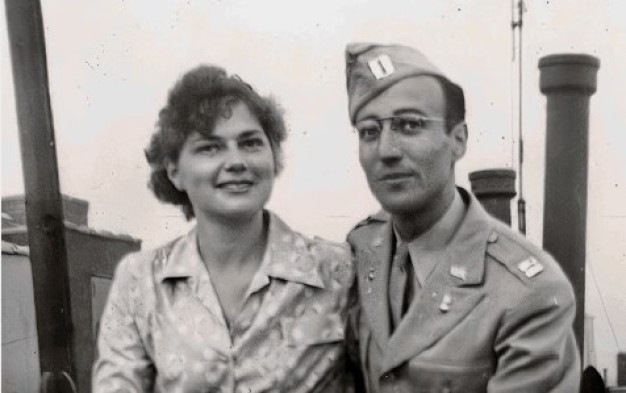The Goldstines and “ENIAC Six”
Herman Heine Goldstine (1913-2004) was elected a Member of the American Philosophical Society in 1979 and served as Executive Officer from 1984-1997. Prior to his tenure as an administrator, Goldstine served as a mathematician and computer scientist. His leadership skills were recognized early on through his supervision of the ENIAC* project, which resulted in the first electronic, programmable, general-purpose digital computer in 1945. Interestingly enough, Herman was not the only Goldstine involved with the computer’s development. His first wife, Adele Katz Goldstine (1920-1964), also made important contributions to the project. They worked closely with the female “operators” who were hired for their mathematical ability. Given the serendipity of my current project–processing Herman’s APS records—and the opening of our new exhibition, Pursuit & Persistence: 300 Years of Women and Science, this blog is about Adele Goldstine and her female colleagues, who were integral to ENIAC’s success.
While ENIAC was developed as a top-secret Army ballistics project designed by John Mauchly and J. Presper Eckert, the female team members were responsible for the hands-on programming that made the computer run. The “ENIAC Six” were hired because their male counterparts found computational work to be more clerical in nature. The applicants were nonetheless interested in the assignment, because few technical jobs were available to women at the time. ENIAC’s operators included: Kathleen McNulty (1921-2006; her married names were Mauchly and Antonelli), Frances Bilas (1922-2012; Spence), Jean Jennings (1924-2011; Bartik), Ruth Lichterman (1924-1986; Teitelbaum), Marlyn Wescoff (1922-2008; Meltzer), and Betty Snyder (1917-2001; Holberton).
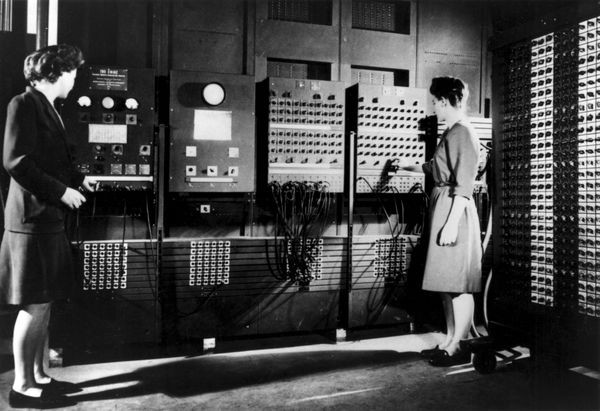
Before Adele Goldstine wrote the operating manual for ENIAC, she and Herman—who were instructors at the Moore School of Electrical Engineering at the University of Pennsylvania— trained the operators, who in turn, later trained each other. The team studied the logic and layout of the system, and then mapped their mathematical knowledge onto its physical structure through trial and error, because nothing like it had existed before. The work was intellectually demanding as well as physical, because the computer required a manual “setting up,” which involved hundreds of switches to be turned and dozens of cables to be plugged in, as well as frequent troubleshooting, because the vacuum tubes used by the system–numbered at 18,000—would selectively burn out.
During the initial phase of its development, ENIAC didn’t have much memory to draw upon, so its components had to be reset with each equation. The system was essentially composed of fast-paced mathematical machines that worked together sequentially, as opposed to our current devices that can run multiple applications at once, with user-friendly interfaces and plenty of memory for data storage.
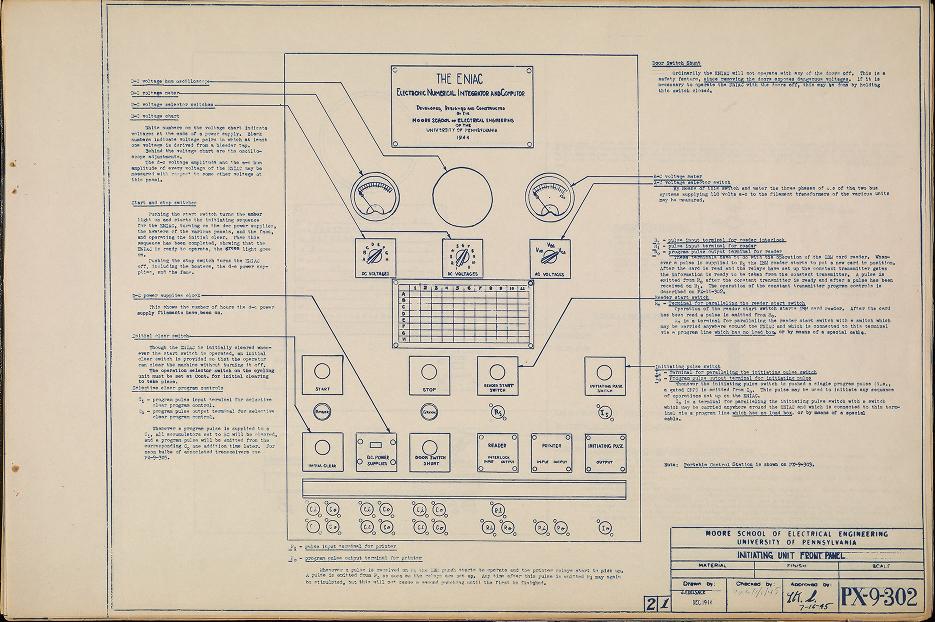
Given these circumstances, Adele’s initial task was to document what her female colleagues had innovated with their manual programming, and then see what more the machine could do when greater memory was realized. With each developmental step, ENIAC evolved from calculating single equations, such as ballistic trajectories, to charting more complex phenomena, such as weather systems. Her documentation provided the foundation for the computer’s operation and enabled ENIAC to eventually perform a set of fifty stored instructions with different coding languages. For instance, her husband Herman worked with John von Neumann (APS 1938) to develop the von Neumann and Goldstine graphing system. Another famous example was the collaboration between von Neumann and Stanislaw Ulam (APS 1967) for computations related to the hydrogen bomb.
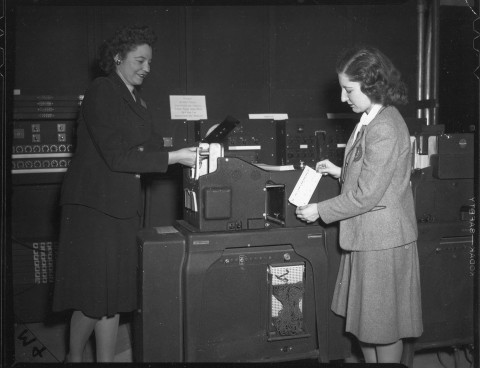
Despite the efforts of ENIAC’s female team members—who basically took an untested machine and developed detailed procedures for running it—they did not receive proper credit for their programming. Fortunately, their findings were preserved through Adele’s project documentation in her husband’s papers, now at the APS. These resources, along with others in APS collections, were used in the documentary, Top Secret Rosies: The Female "Computers" of WWII.
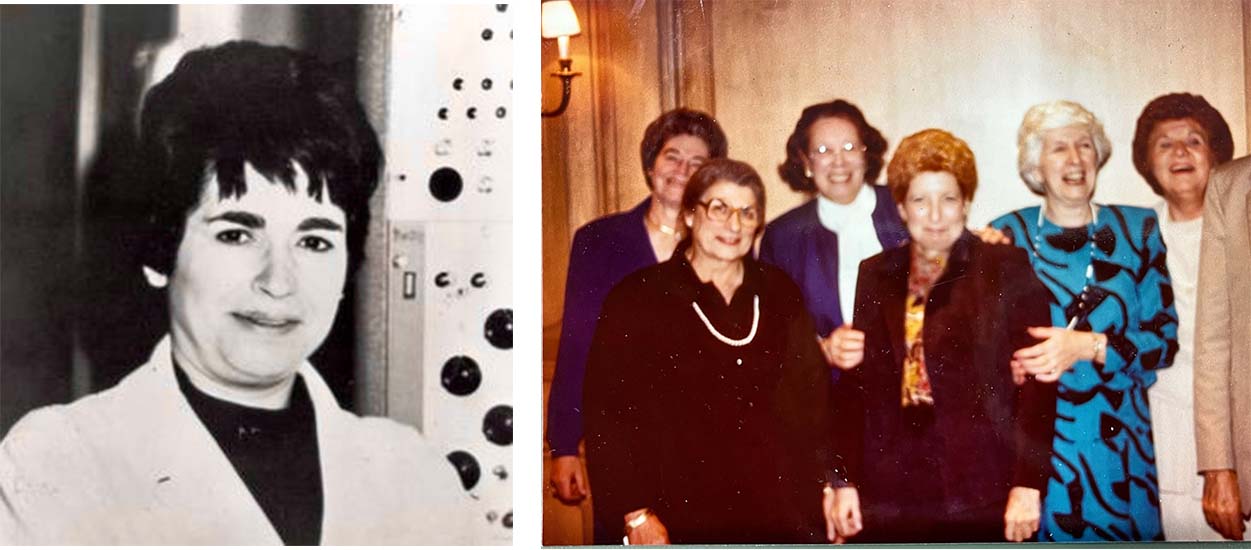
For her part, Adele continued her work with ENIAC after World War II and joined her husband and von Neumann at Princeton University. Some of her female colleagues also stayed active in the profession, and were involved with the development of subsequent systems, such as EDVAC. It’s heartening to see scholars like Kathy Kleiman give credit where it is due, such as the ENIAC Programmers Project. For the Society’s part, our current exhibition is part of that restorative effort, which includes a digital humanities project online, as well as a symposium scheduled for later this summer. The APS is proud to contribute to this ongoing research, and we encourage readers to keep exploring the extraordinary achievements of women in science!
* ENIAC is an abbreviation for the "Electronic Numerical Integrator and Computer"


